Yard is a bit quirky, starting with its odd name. I’m one of the only travelers among a group of working people and others looking for work. Some are long term residents. There’s a whole Brazilian family living in one room but I never find out if they’re normal paying guests or connected to the management in some way.
Although Amora is not especially appealing, Yard’s interior environment is pleasant and I end up spending 3 nights there, working away and cooking food. One conversation with a Nigerian doctor studying for his Portuguese medical license test reveals how disruptive economic and political issues affect personal lives. He had been practicing in Ukraine until its war started and now is essentially starting again from scratch in Portugal. He has been learning the language while studying for the test, which is only administered in Portuguese. Along with hard work and studying, he is counting on god to help him succeed.
He and others looking for work come to Portugal because it’s the easiest place in the EU to get a work visa. Any specific job they get is not as important as its path to potential permanent residency, followed eventually by the holy grail of EU citizenship. Everyone I talked to planned to move to a more prosperous EU country if and when they got that golden ticket passport.
An Egyptian living at the hostel is a freelance software developer working away on a contract job on his laptop every day in the shaded outdoor patio area. He declares that he’s totally focused on work, putting off marriage and family, yet he obviously has a younger local girlfriend in tow. He spends at least an hour a day conversing in Arabic with friends back home.
A third man, a Mexican, is looking for a job, any job, to qualify for a work visa. I ask him three times what sort of job he wants or is qualified for, but the answer is always “Anything”.
In sum, there is a corps of foreigners in Portugal working the system to better their lives, despite cultural dislocation and language barriers. I doubt many Americans can imagine how hopeless things must be at home to make that worth it.
Saturday morning, I take the long walk to a supermarket to stock up before the Sunday closures. On my way back, I pass a South Asian barbershop advertising $5 haircuts. Since it’s been 8 months since my last one, I can’t resist. The clientele here is mostly African. While I’m waiting my turn, it’s interesting to see customer after customer sit down and pay to have their short hair shaved bald. I don’t go that far but I get mine quite short. I should be good for another 8 months.
[NOTE: Some displayed images are automatically cropped. Click or tap any photo (above the caption) to see it in full screen.
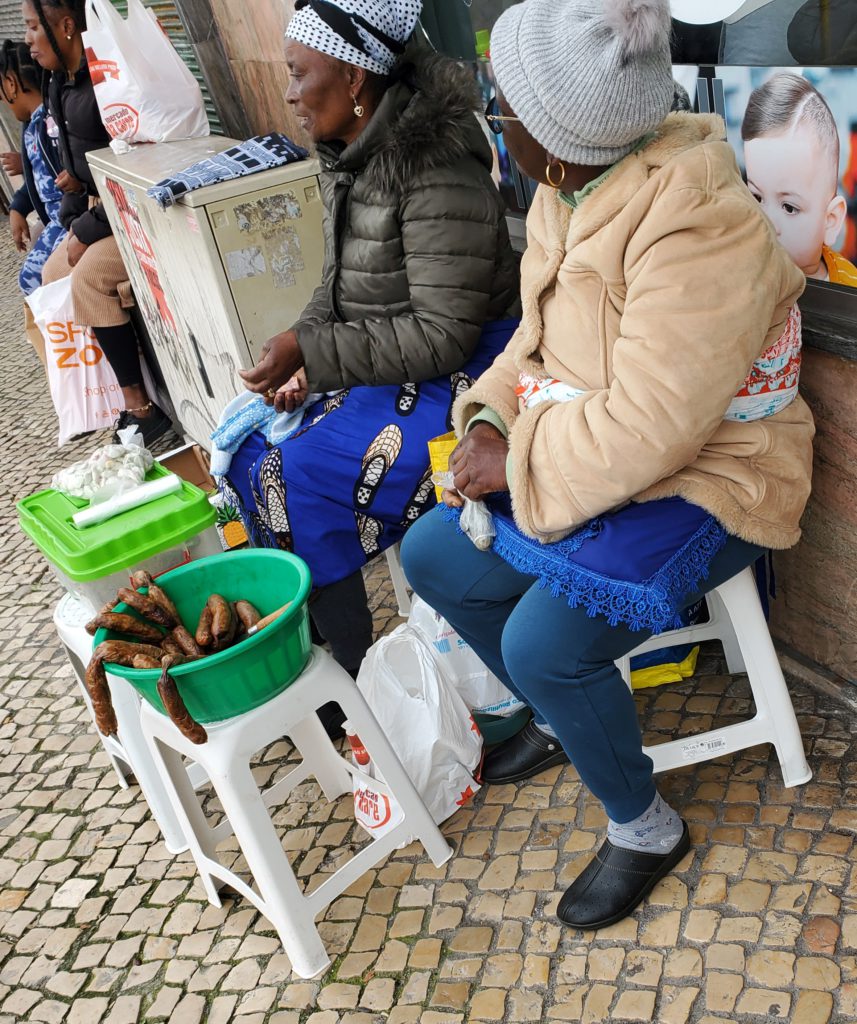
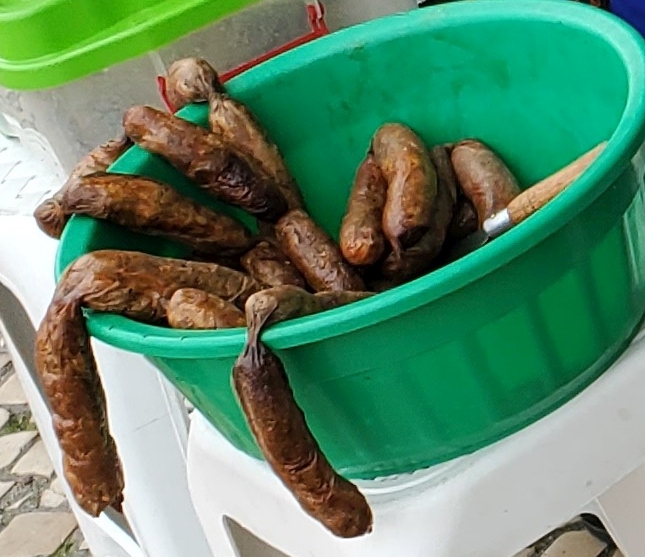
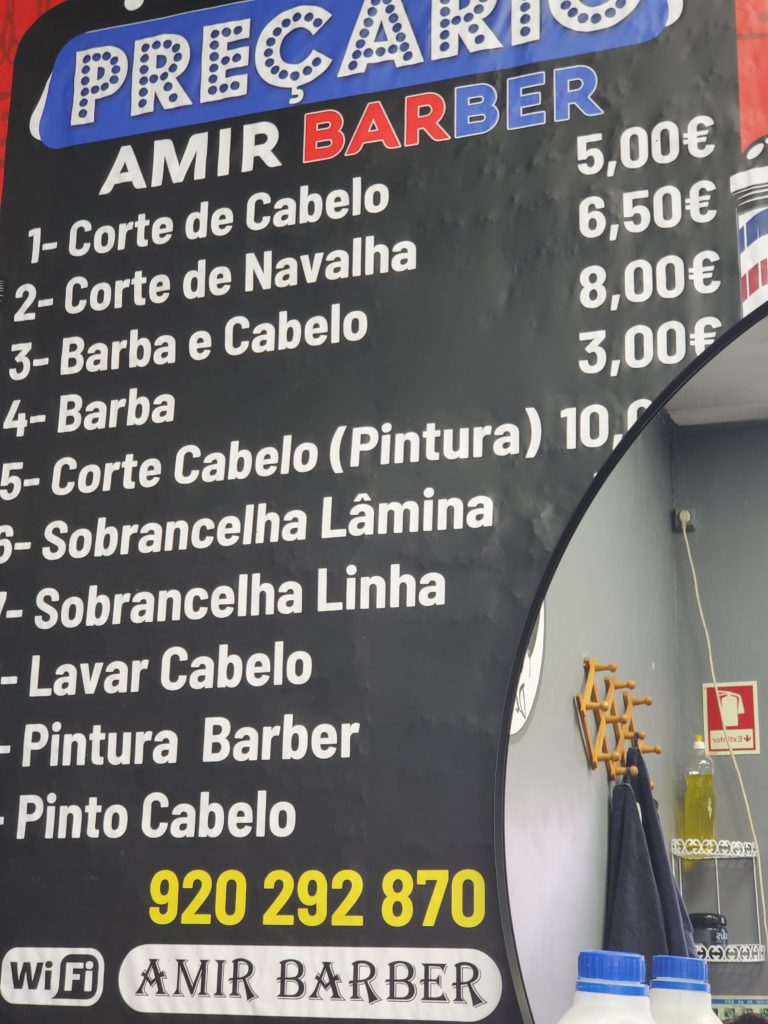

On my last morning, I meet the hostel’s owner, Carlos, an ambitious young man who owns a second hostel in Lisbon’s old town. That one, about 50% more expensive (but still cheap), he says is dominated by tourism guests rather than workers. He recounts how his expenses have increased recently and I believe it. He spends some of his time supplementing his employees by folding sheets and putting away linen.
I now have an invitation in Lisbon from a BeWelcome host. Lisbon is a very old city. There’s evidence of neolithic habitation going back an incredible 8 centuries. It’s recorded history begins about 800 BC with Phoenician and Greek trading posts, followed by successive occupations by Carthaginians, Romans, Suebi, Visogoths.
Leonor, my host, lives in the Alfama neighborhood, a hillside of steep, narrow streets and stairways. When the Moors conquered Lisbon in the 8th century, Alfama was the entire city of Lisbon.
There’s very little free parking in Lisbon and in Alfama I’m not even allowed to drive to Leonor’s house to unload — resident vehicles only. The area is regulated by remote controlled bollards that block entry. I’ve found that I can park for a reasonable $8 a day at the cruise ship terminal, a modest 14 minute uphill walk to her house. Rather than have to drag my heavy bag up the stairways, Leonor tells me to drive to the entry and she will try to get them to let me in for a few minutes to unload. When I arrive she is at the bollard and has to argue with a disembodied voice before the barrier magically slides out of sight. Although he doesn’t even know who she is, the operator saves face after giving in with, “OK, but this is the last time.”
Leonor is a retired child psychologist. She still does some counseling, helps run a community garden, and takes care of her elderly mother who lives across the estuary, about 40 minutes away by water taxi. As a result, she’s away from home a lot so our interactions are somewhat limited.

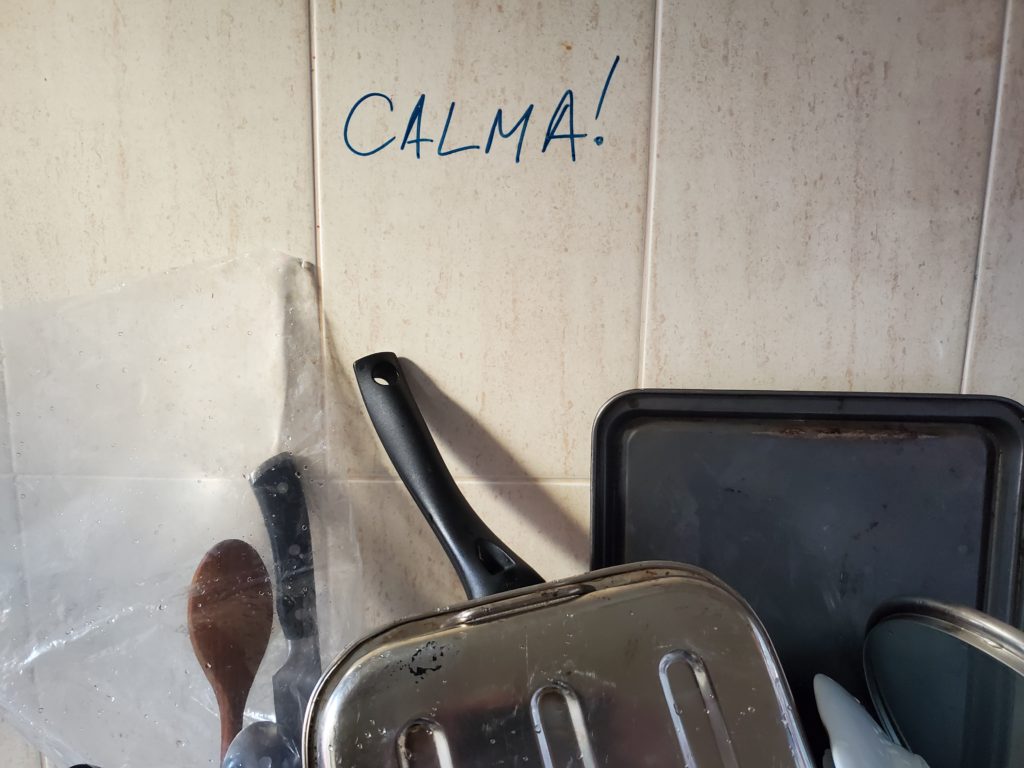
Tuesday morning, she takes me on a walking tour of her area of Lisbon, including some hilltop panoramic views of the city, along with a stop for coffee and pastry,
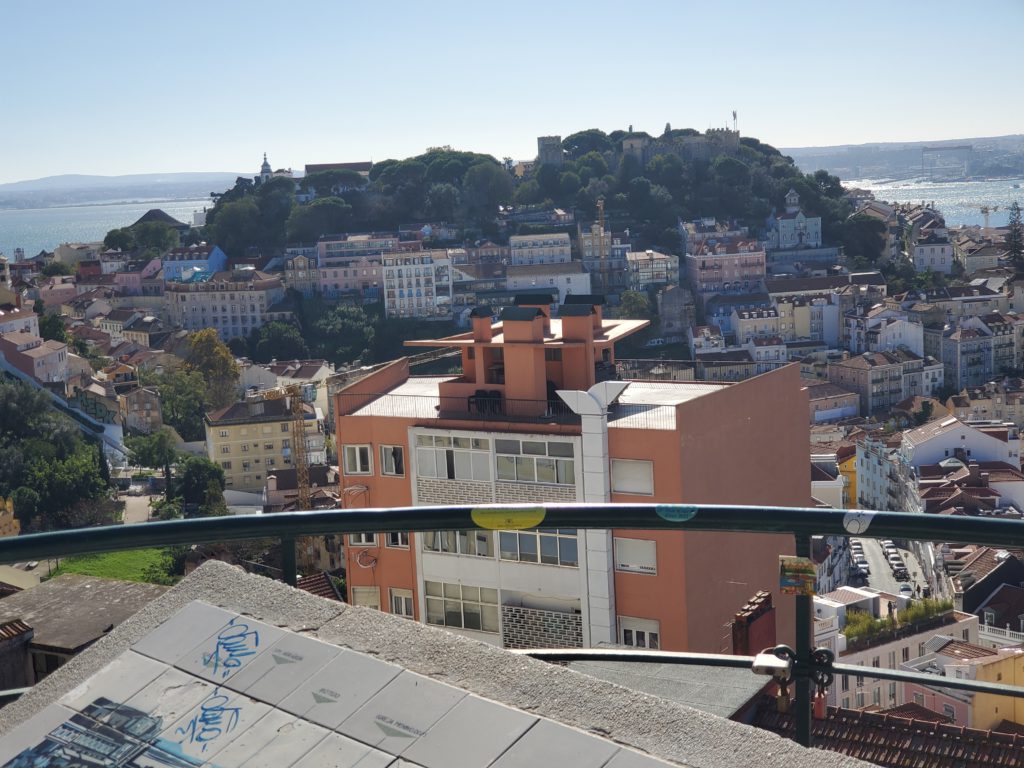
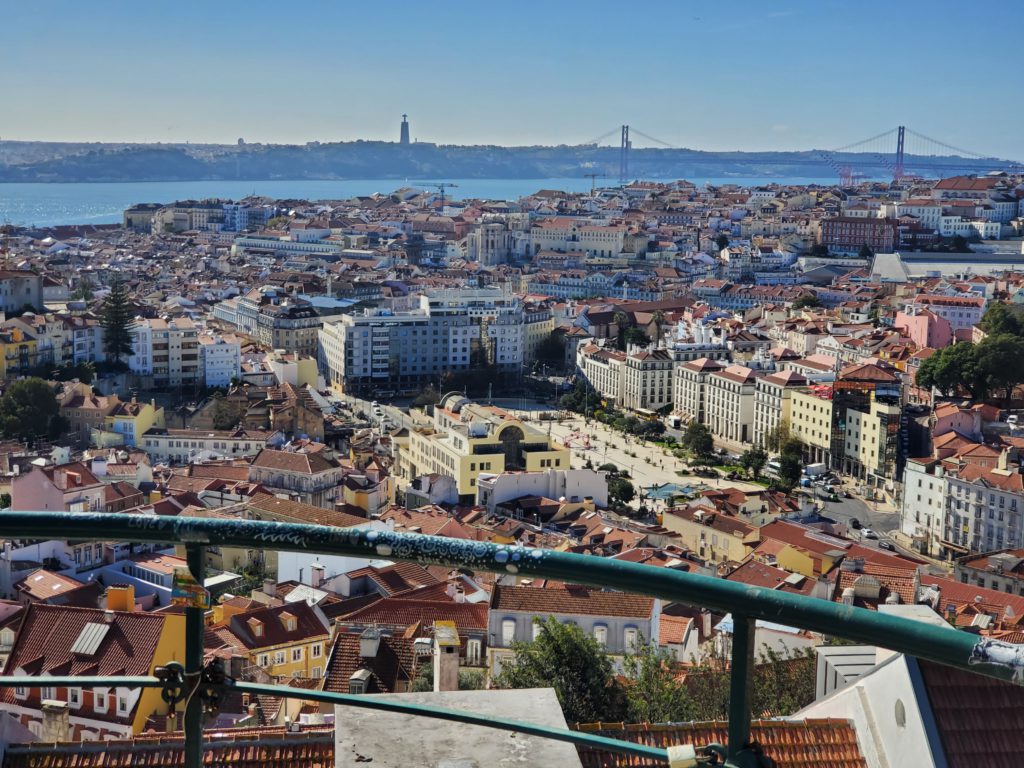
Then she peels off to a meeting and I continue on my own, eventually ending up at the Tagus, the longest river of Spain and Portugal.
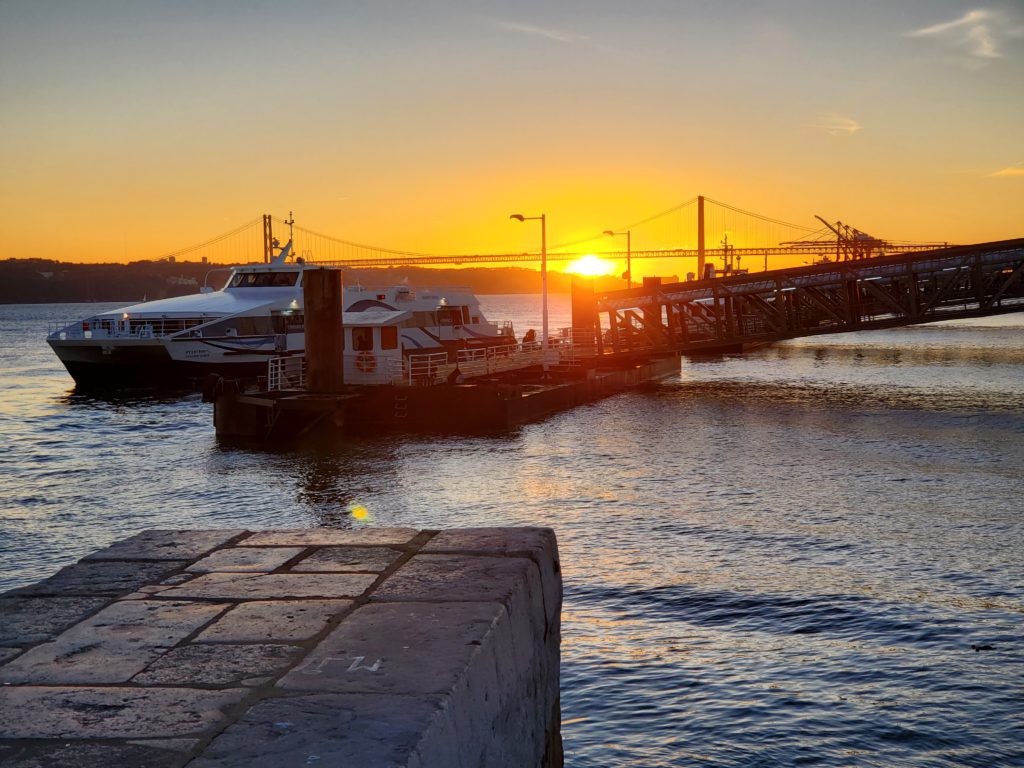
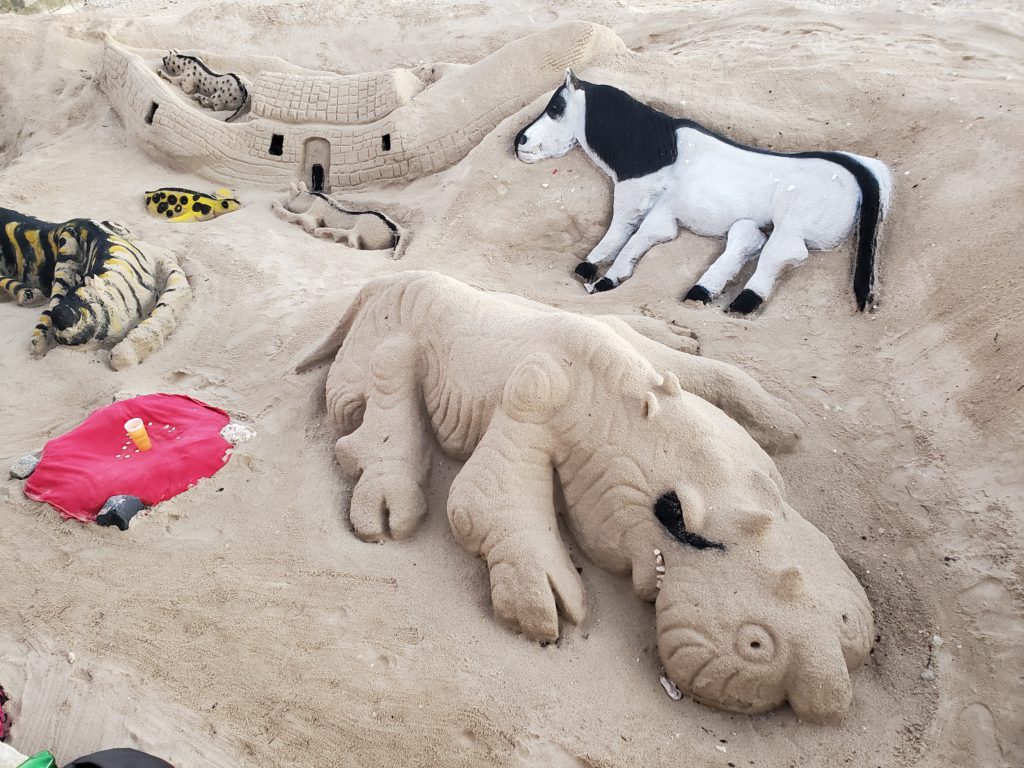
Lisbon was almost destroyed in the earthquake, fires, and tsunami of 1755 and much of the city architecture dates from then onward. “Tsunami Evacuation Route” signs speak to the awareness that it could happen again. Even in November, the riverfront promenade is heavily populated with tourists.
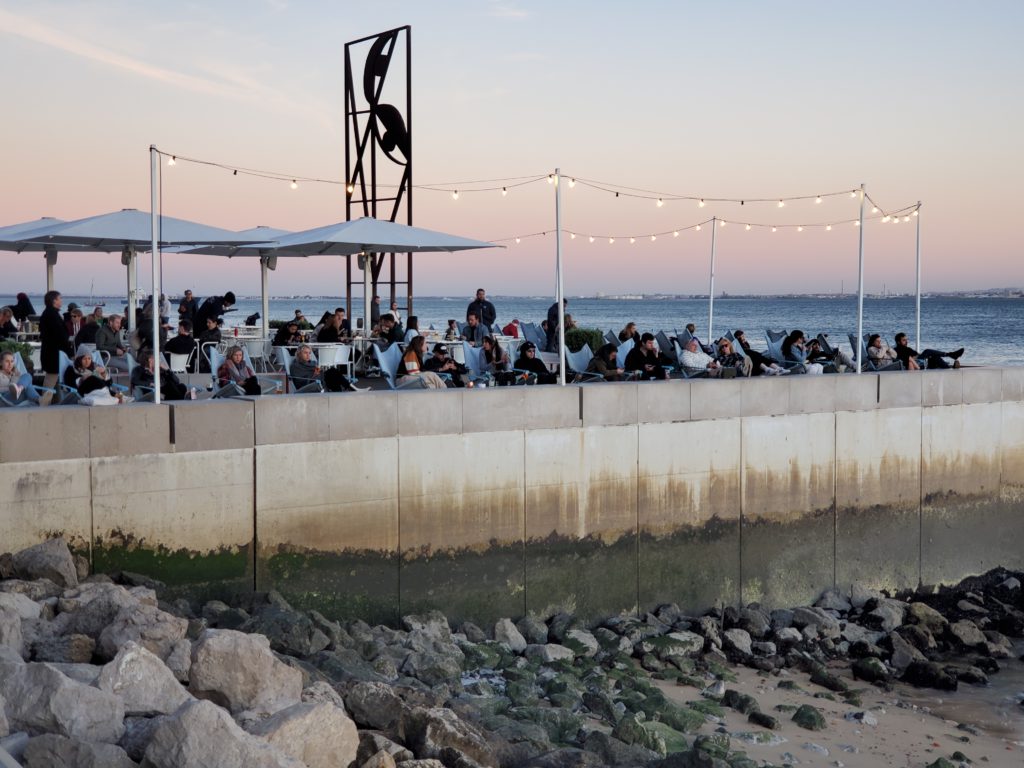
In the evening, Leonor makes an excellent dinner and and we get further acquainted, She is a widow whose husband was a pilot and she has lived alone for many years since he died. We talk about her Alfama neighborhood and its long history. She says these days it’s overrun by tourists and residents are moving out to be replaced with Airbnbs and the like. She too is considering relocating but would have to pay much higher rent than she is now. The neighborhood is very charming and quaint but I can see how a round the clock infestation of tourists, some of them loud and drunk, could diminish the thrill of living there.

Wednesday, Leonor is heading across the river to her mother’s, so I fuel her up with sourdough pancakes. I start my touring day by riding the entire route of the famous E28 tram. This is both an important commuter route and a major tourist attraction. At the eastern terminus, there is a long line of foreigners waiting to board. As I stand in the queue, I spend some time talking to two Lithuanians who drive around Europe setting up display booths at various expositions. When they finish up early, they can sightsee, which is what they’re doing now.
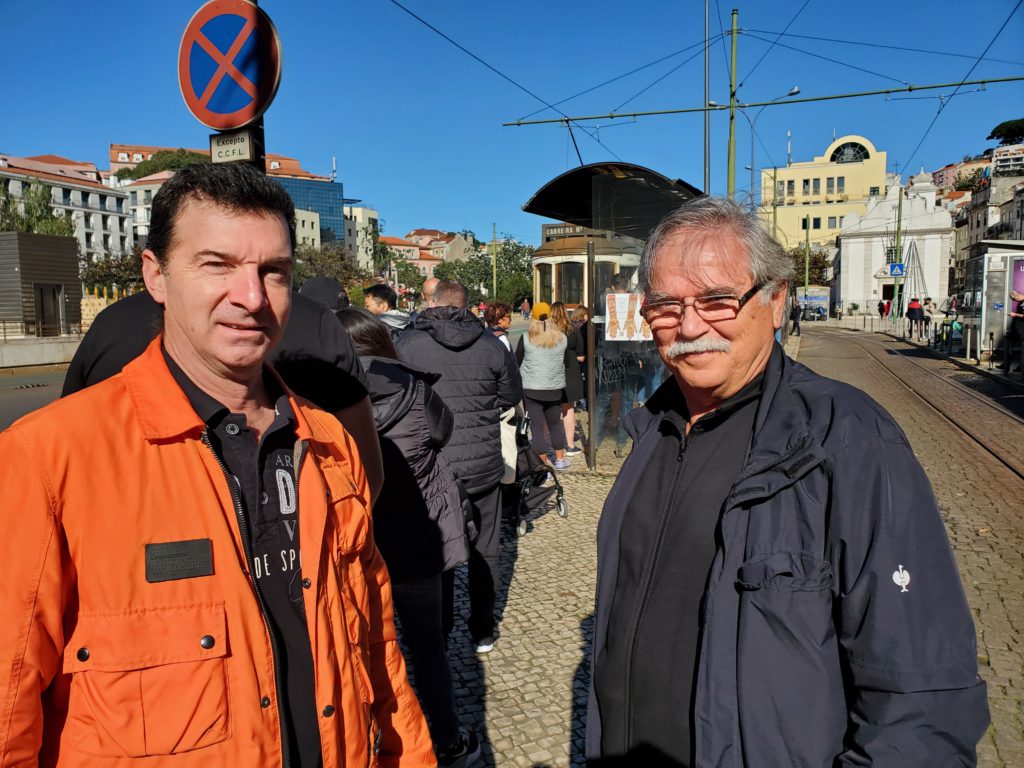
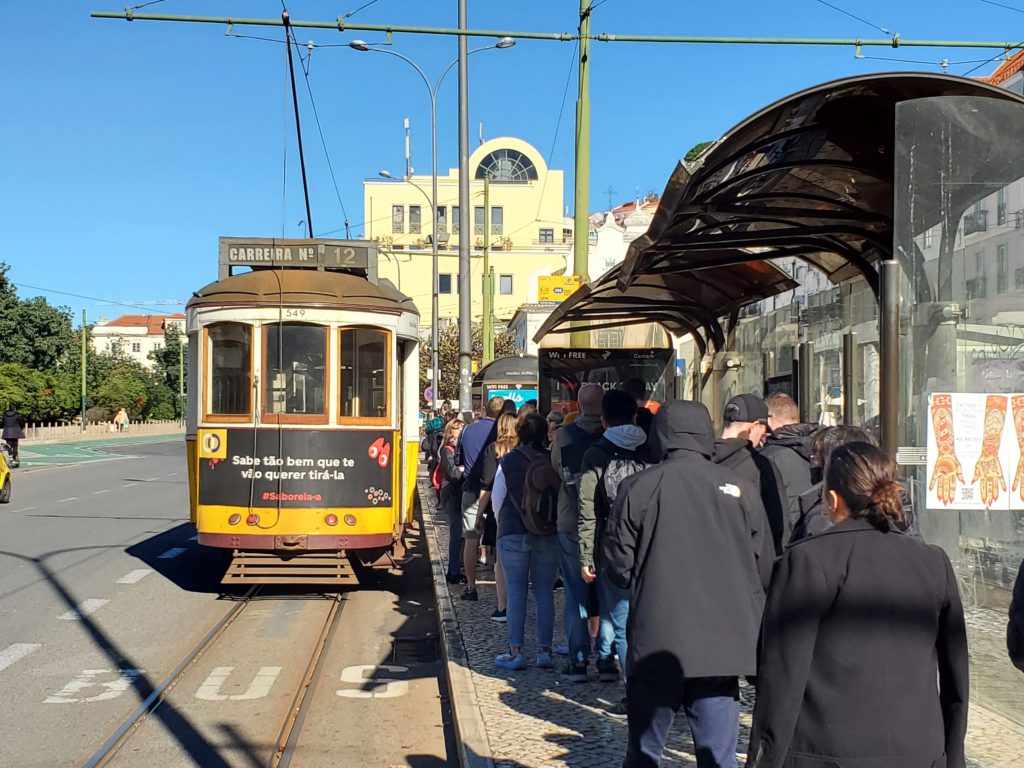
To reduce crowding on board, there are signs in the tram reminding tourists to get off at the end of the line rather than continuing to occupy a seat on the return trip.

The remodeled old tram cars clank along at frequent intervals through the hilly parts of the city. The E28 runs through many narrow winding streets including the Alfama neighborhood. Certain sections are controlled by traffic lights as the streets are only wide enough for one track, which is also the only vehicle lane. It’s a really cool system and it’s fortunate that it’s been preserved and maintained.
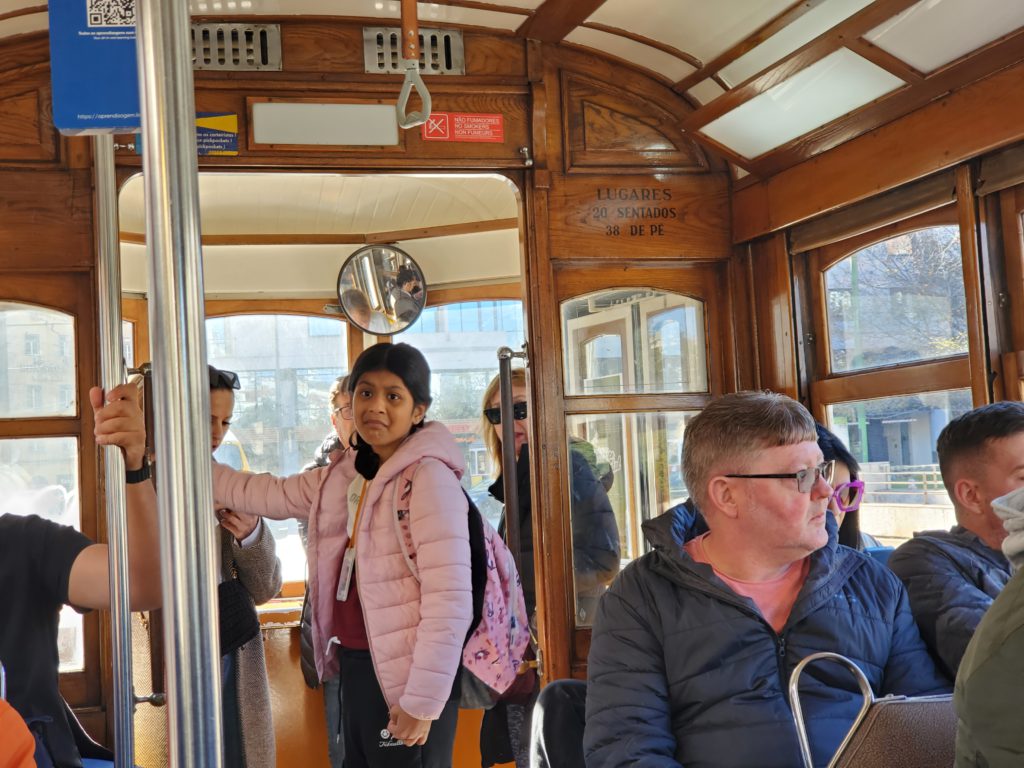
Beyond the tram’s western terminus lies a large park so I grab a bus up there in hopes of seeing a different panoramic view. Walking through the forested park is very pleasant but when I reach the prominent observation deck, I see it is fenced off and abandoned, apparently absorbed by the adjacent military base.
After a few hours I bus and subway back to the main part of town. Lisbon subways are a lot like New York’s, with one noticeable safety difference. The third rail (probably 600 VDC) here doesn’t have a wooden cover over it. If someone were to fall on the tracks they would drop right onto the live rail and be, literally, toast.
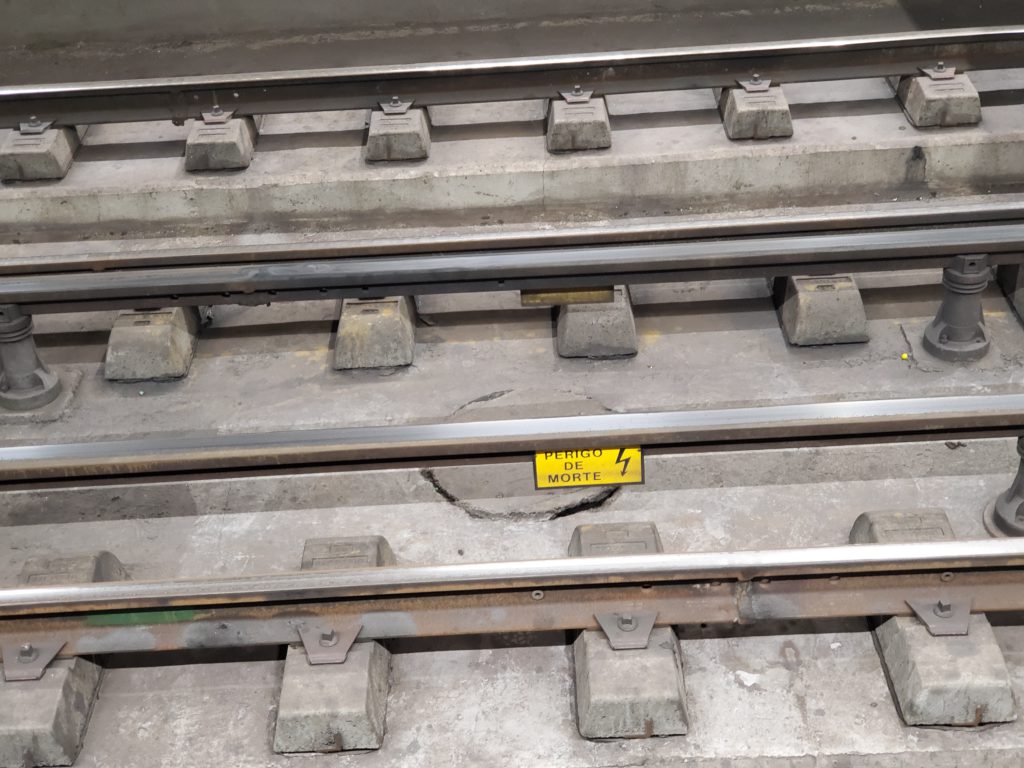
I navigate my way to the Museum of Lisbon. It’s late in the day so my plan is just to scope it out and come back in the morning. When I find out the admission is less than $3, I decide to get started now and return in the morning for part 2. While filled with exhibits telling the interesting story of Lisbon’s long history, the museum turns out be so compact that I can tour it fully on this trip.

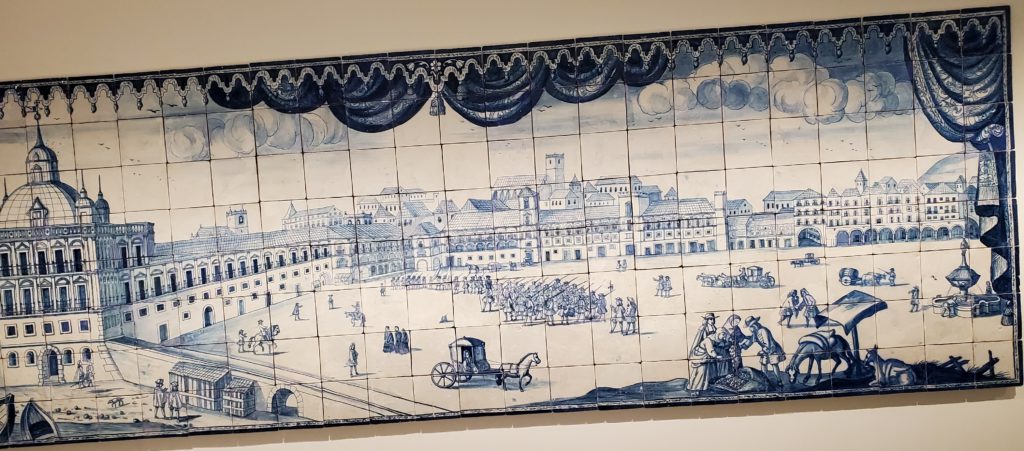

With 30 minutes to go before closing, a guard points me to a second building at the rear of the grounds which turns out to be devoted to Saint Anthony. Born and raised in Lisbon, he is revered even though he left permanently at age 17. In fact, Anthony is, whew, really big here in Portugal. If the museum exhibits are to be believed it’s mainly because as a child and young man he lived a life of irreverence and debauchery before getting serious religion. The Portuguese seem to delight in that alleged transformation. He’s the patron saint of matchmaking (Saint Tinder?) and lost stuff. I guess the big things to control like drawn out war, drunken sailors, and primitive agriculture were already scooped up by more senior saints.
Going back to Leonor’s after dark offers a new perspective of Alfama’s narrow streets.
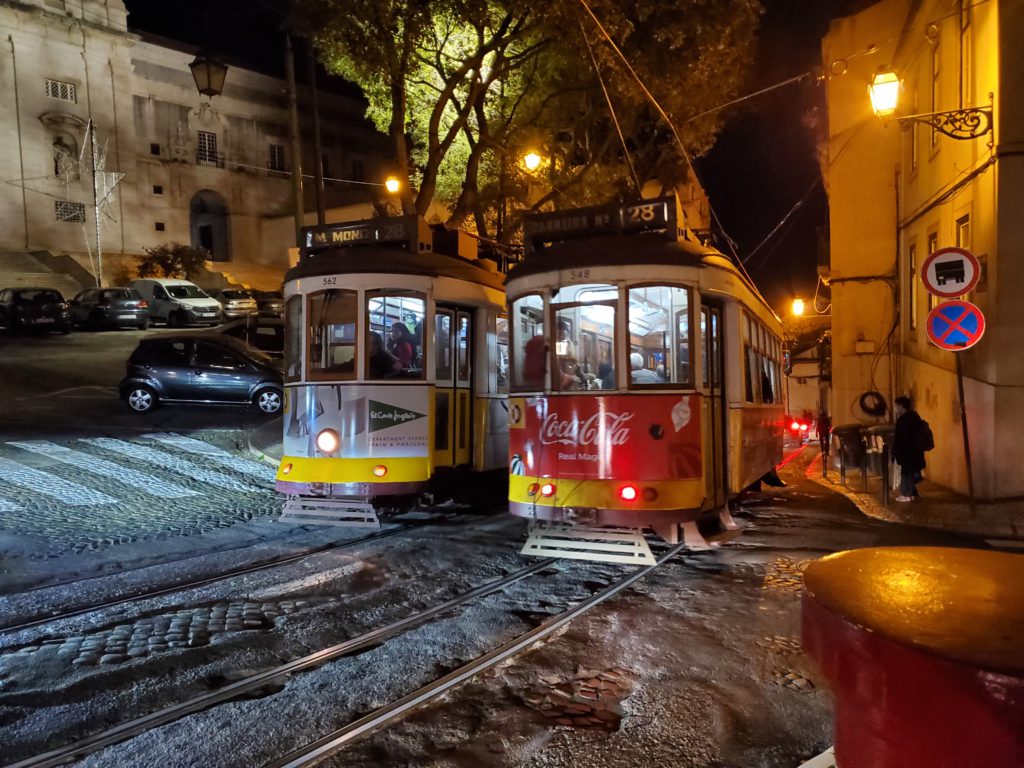
Thursday morning, Leonor is off early again, so we say our goodbyes and I pack up, drag my stuff down to the riverfront to the car. Before crossing the river back south. I drive around the city seeking out some of the street art for which Lisbon is notable.
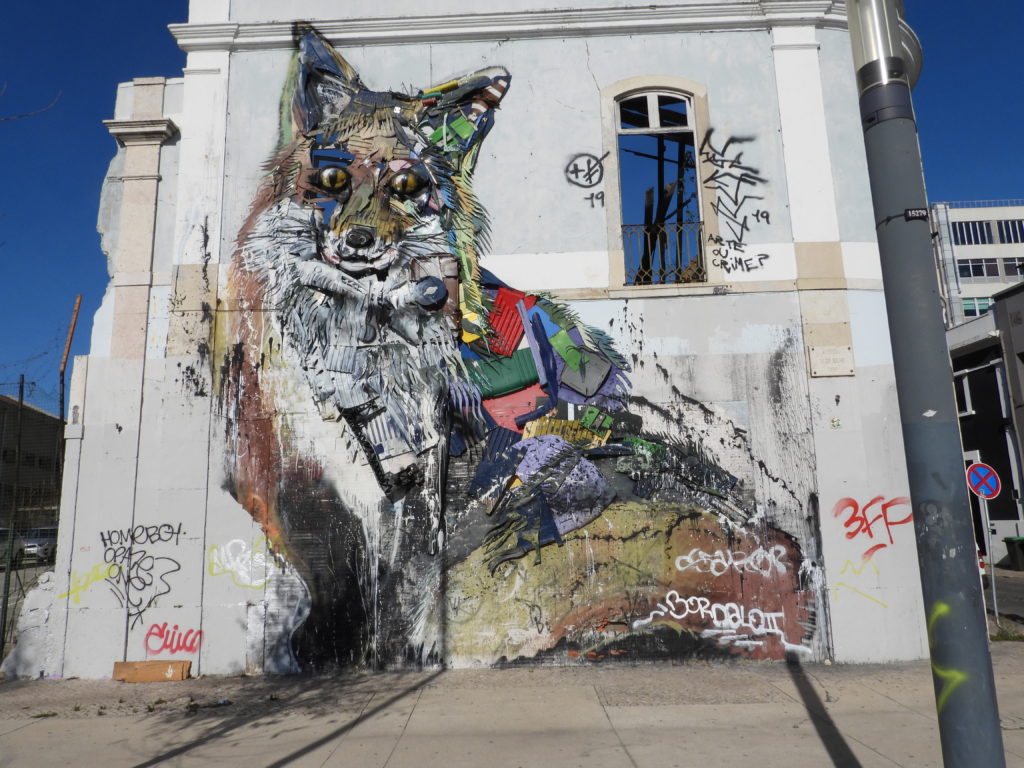

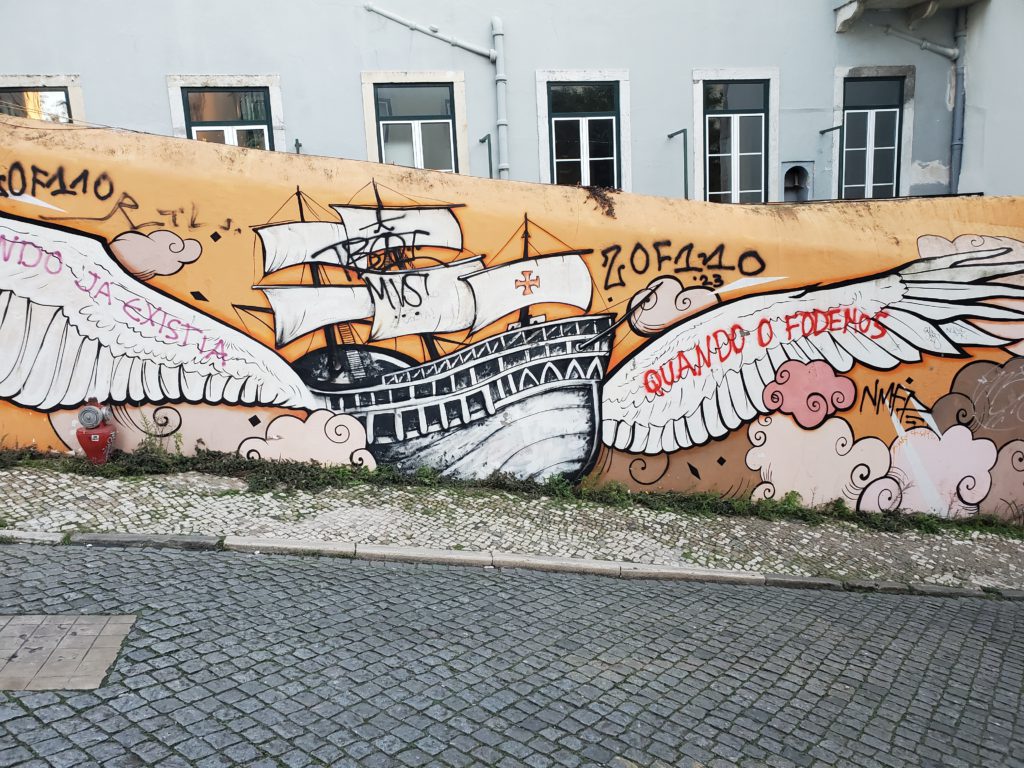

Later, from the south side, I get a farewell view of Lisbon back across the water.








